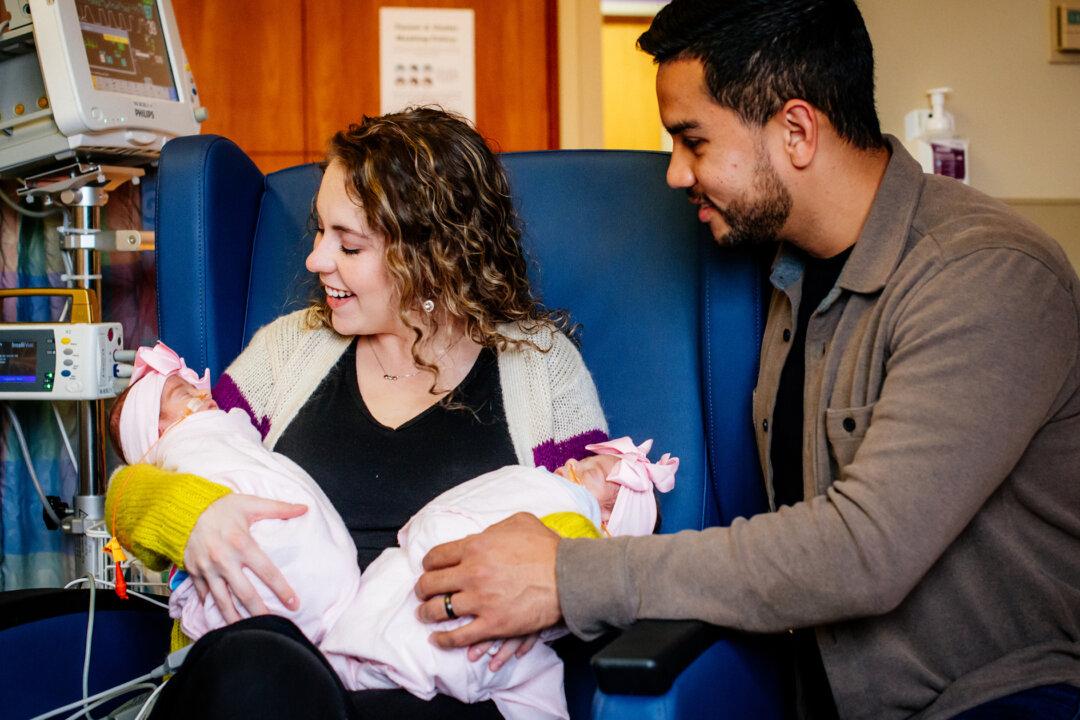The proud parents of naturally-conceived identical twins were blessed twice over when they became parents to a second set of identical twins just 13 months after welcoming their first.
Twenty-seven-year-old elementary school teacher Britney Gilbert Alba, of Tuscaloosa, Alabama, and her husband, firefighter Frankie Alba, 25, were thrilled to discover they were expecting identical twin boys. Rare monochorionic-diamniotic twins, Luka and Levi, had two different amniotic sacs but shared the same placenta.





